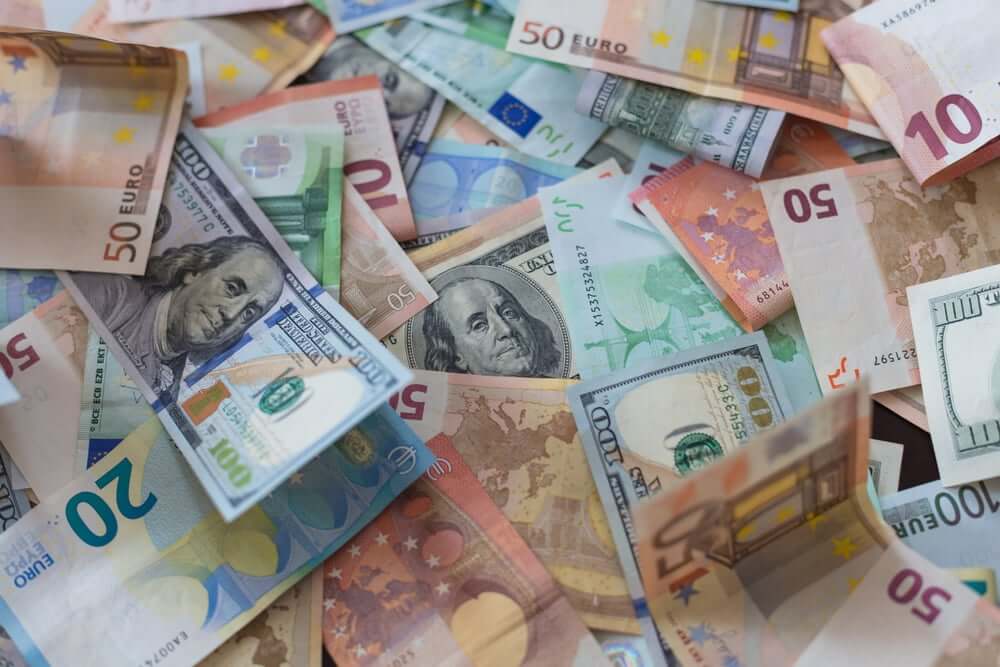
U.S. Dollar gains after a two-day loss. What about Euro?
The U.S. dollar rebounded after its two-day losing streak on Wednesday. Treasury yields paused recent declines, their gain taking the edge off the common currency and the New Zealand dollar. The latter had soared earlier thanks to a hawkish central bank message. The Reserve Bank of New Zealand has become the latest central bank to hike interest rates by half a point. Analysts expected that move, and it also provided hawkish guidance on the bank’s policy path. It stated that a larger and earlier hike significantly reduced the risk of inflation becoming persistent.
The bank’s position had helped the kiwi dollar surge as much as 0.8% at one point to a three-week high of $0.6514. However, as the greenback gained momentum, it retraced those gains and, by 1030 GMT, exchanged hands flat at $0.6458.
Colin Asher, the senior economist at Mizuho in London, noted that the RBNZ move shows clearly that central banks are not in a mood to slow down. It’s a hint that policy tightening will remain aggressive in the short term. But conditions are pretty tight in a lot of G10 economies. Asher thinks that signs of U.S. economic slowdown became evident most recently in housing and business confidence data released on Tuesday. They could force markets to dial down rate increases and inflation expectations.
Meanwhile, U.S. 10-year Treasury yields have fallen by some 40 basis points since hitting 3-1/2-year highs earlier in May. Ten- and two-year yields remained steady on the day, though. The dollar had tumbled down around 3% after skyrocketing to two-decade highs earlier this month. Despite that, it jumped by 0.6% from one-month lows touched on Tuesday.
How will Treasuries’ ups and downs influence the dollar in the short term?
According to Asher, there is a reasonable chance U.S. rates have peaked, and the greenback has peaked along with it. He doesn’t think it will plunge sharply from here. Still, the pricing of tighter policy is due to a pause. Earlier this week, the dollar also suffered from European Central Bank chief Christine Lagarde’s comment. She flagged an end to negative interest rates in the coming months. Lagarde’s statements implied an increase of at least 50 basis points to the deposit rate, fueling speculation of bigger hikes this summer.
The euro had initially rallied to one-month highs of $1.0748 on Tuesday, but it dropped by 0.7% to $1.0662 on Wednesday. ECB board member Fabio Panetta warned of a normalization tantrum caused by taking interest rates to neutral settings, taking some steam out of the common currency.
Moreover, Dutch central bank chief Klaas Knot stated that the ECB might not discuss reducing its balance sheet in 2022 as it focuses on rate increases. According to a new survey by Hargreaves Lansdown, European investor confidence declined by 25% in May, losing far more than the 18% fall in North America.
The euro also lowered by 0.35% against the Swiss franc, which has strengthened in recent days. Central bank officials noted that they would not hesitate to tighten policy if inflation stayed above target ranges, boosting the currency.
Later in the day, investors may also glean some clues about the pace of tightening by the Federal Reserve. They are waiting for the minutes of the last policy meeting to emerge. Atlanta Fed President Raphael Bostic warned on Tuesday that headlong rate increases could create significant economic dislocation. He urged his colleagues to proceed carefully.
How are the EM currencies faring?
Emerging market currencies climbed up on Wednesday. The Russian rouble extended gains to a four-year high against the greenback. On the other hand, the Turkish lira plummeted again ahead of an interest rate decision later this week.
The Russian rouble jumped by more than 56 against the dollar, hitting a level not seen since 2018. Export-focused companies are currently selling foreign currency to pay taxes, while traders are shrugging off the expiry of a key debt payment licence. Both of those actions are helping the rouble.
Meanwhile, currencies in central Europe remained mixed. The Polish zloty edged up by 0.1% against the euro after data showed the unemployment rate dropped to 5.2% in April. Hungary’s forint also shaved off 0.4%. The central bank tried to reassure investors that the country’s banks are resilient even if geopolitical tensions prevail longer due to the Ukraine war.
The South African rand fell as the dollar rallied ahead of the release of U.S. Federal Reserve minutes of its last meeting.




